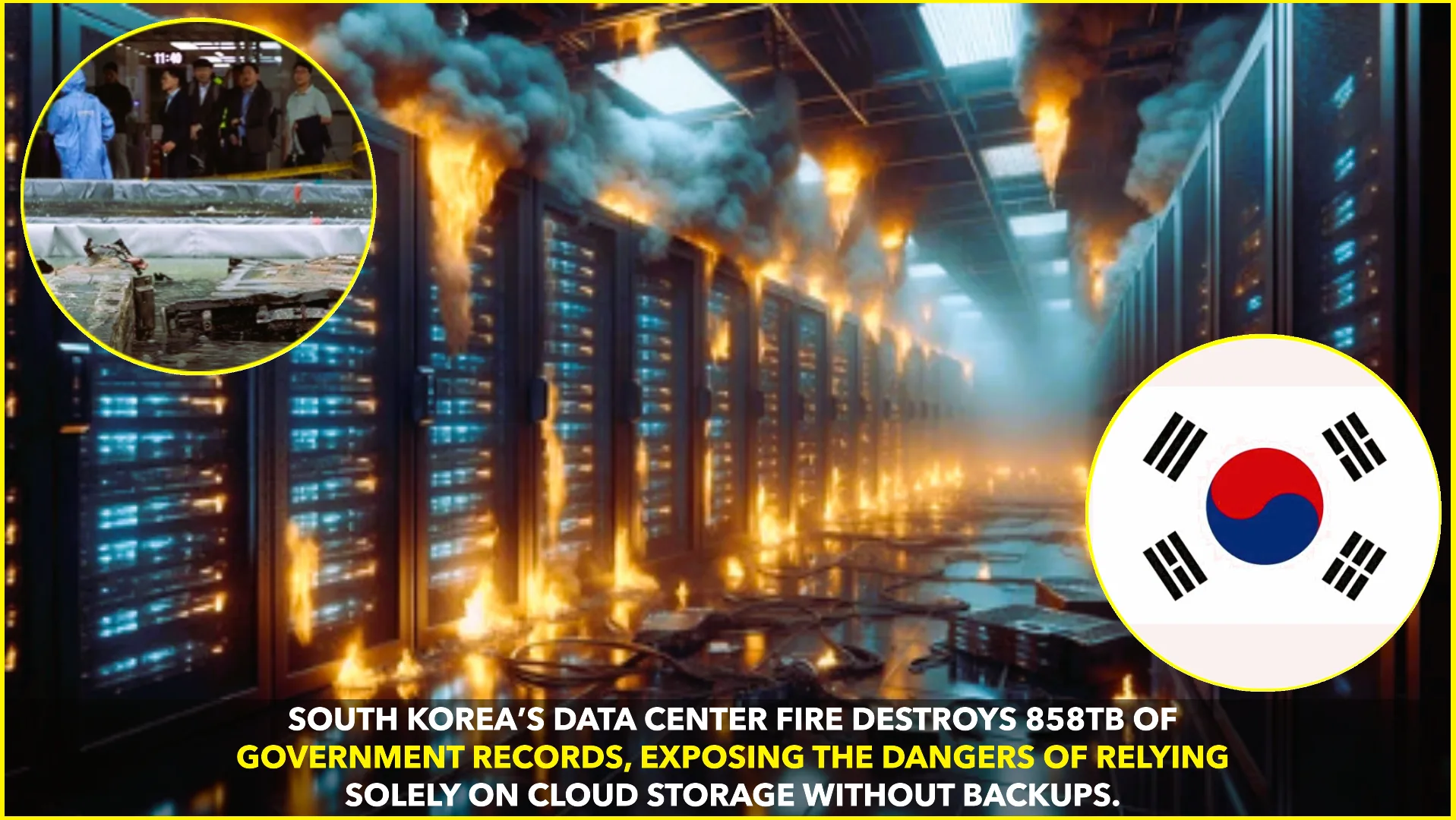A devastating fire at a South Korean government data center has destroyed 858 terabytes of official data, crippling government operations and highlighting the vulnerability of digital infrastructure. The incident, which occurred last month at the National Information Resources Service (NIRS) facility in Daejeon, has become one of the country’s most serious IT disasters in recent years.
The Blaze That Brought Down a Nation’s Data
According to The Korea Herald, the fire broke out in the section hosting the G-Drive cloud platform, a system used by more than 125,000 government officials to store and share documents. The G-Drive was designed as a secure, centralized cloud platform meant to eliminate the need for individual storage on personal computers.
But that centralization proved disastrous. Once the fire reached the data storage area, the loss was swift and massive — erasing terabytes of administrative data, emails, reports, and crucial internal documents that powered multiple ministries.
Officials confirmed that nearly 858 terabytes of government data were destroyed beyond recovery. While some physical hardware was saved, the majority of servers suffered irreversible heat damage.
No Backups — A Costly Oversight
Perhaps the most shocking revelation came days after the fire: there were almost no backups.
According to Yonhap News Agency, government IT staff had skipped regular data backups because of the “massive volume of files” stored on G-Drive. They believed the cloud system itself was secure enough — a decision that has now proven catastrophic.
Weeks after the incident, only 27% of affected systems have been restored, mostly using fragments of mirrored data from external partner systems. For thousands of public officials, the loss means they no longer have access to years of critical work files, administrative approvals, and public service documents.
A government spokesperson said the absence of offline backups was due to “capacity and cost issues,” but many critics have called it a “serious failure of digital management.”
How the Fire Happened
Initial investigations suggest that the blaze started due to an electrical fault in one of the power distribution units in the server room. The fire suppression system was reportedly activated but failed to contain the flames quickly enough.
The incident led to temporary shutdowns of several government websites, internal portals, and digital correspondence systems used by ministries and agencies.
The Ministry of the Interior and Safety stated that forensic experts and data recovery firms were working “round the clock,” but the chances of full restoration remain slim. Officials are also assessing whether any classified or sensitive data may have been compromised during the fire.
The Cost of Overreliance on Cloud Systems
The Daejeon data center fire has sparked a national debate about the risks of depending solely on cloud infrastructure without physical or off-site backups. Many cybersecurity experts have warned that cloud does not equal immunity from disasters.
“This tragedy shows that even the most advanced cloud systems are not fireproof,” said data security analyst Kim Joon-ho in a statement to The Korea Times. “When all your eggs are in one basket, a single event can destroy everything.”
The South Korean government is now reviewing its data storage policies and has promised to introduce a multi-layered backup strategy, including offsite replication and encrypted cold storage for sensitive records.
Global Lessons from the Disaster
Beyond South Korea, the incident serves as a sobering warning to governments, corporations, and individuals worldwide. The assumption that data stored “in the cloud” is inherently safe has been challenged in the most dramatic way possible.
Experts stress the importance of the 3-2-1 backup rule — keeping three copies of data, on two different storage types, with one offsite. For governments managing national records, the loss of data can have long-term implications for governance, accountability, and transparency.
As officials work to rebuild the damaged infrastructure, this fire will likely shape how countries approach digital storage resilience for years to come.










